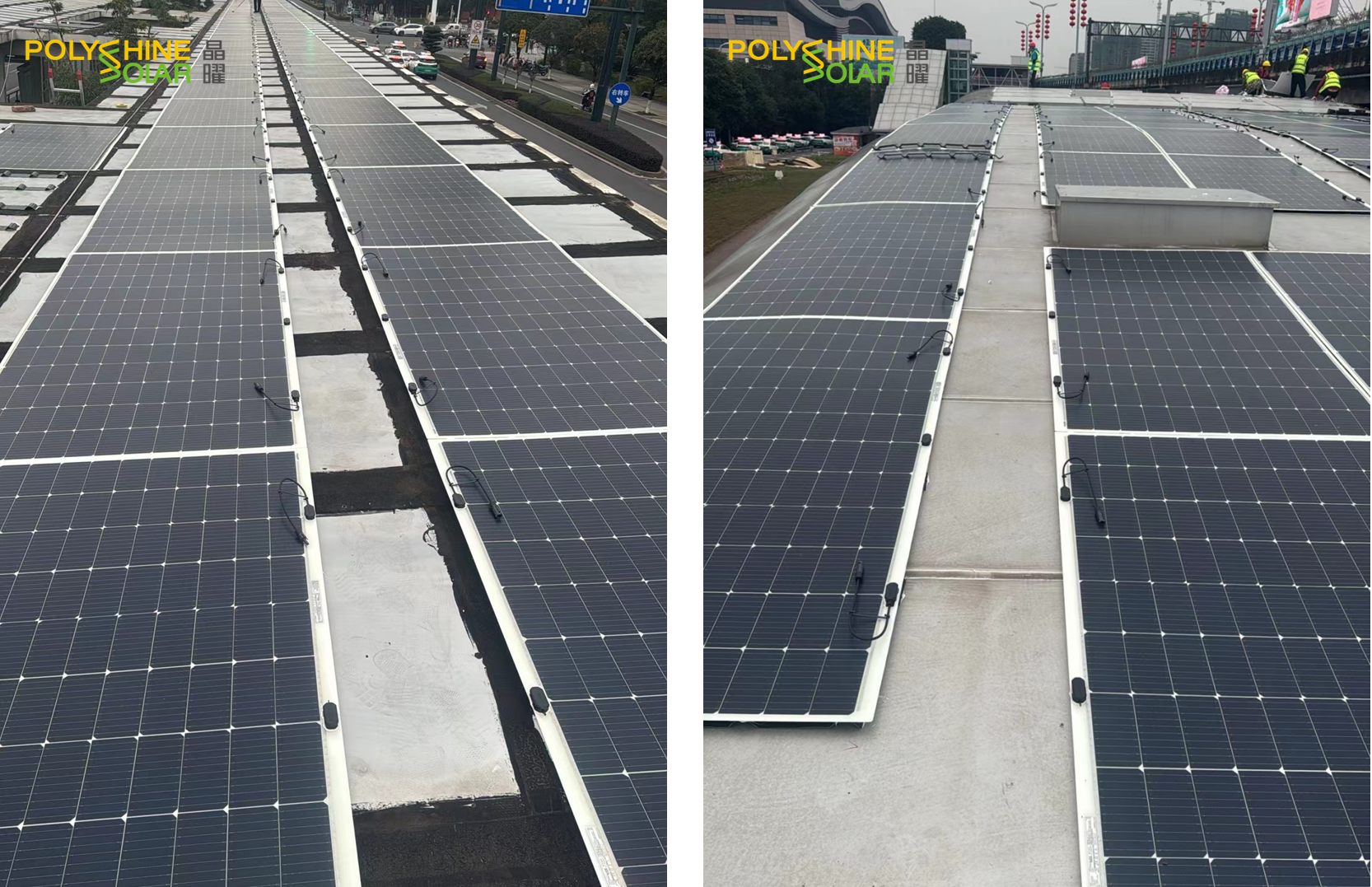The Yibin ART T1 Line in Sichuan Province has become the world's first rail transit system to achieve carbon-neutral operations certified by the internationally recognized PAS 2060 standard. As part of its green initiative, five streamlined stations along this intelligent rail route will now feature ultra-thin flexible solar panels on their rooftops. This photovoltaic upgrade reinforces the city's commitment to sustainable development through clean energy innovation.
However, its stations posed unique challenges:
Varied designs: Stations had curved roofs with limited load-bearing capacity.
Weight restrictions: Traditional solar panels were too heavy and rigid to adapt to the structures.
Zero operational disruption: Installation needed to avoid impacting daily transit services.
Polyshine Solar’s ultra-thin flexible PV modules overcame these hurdles with four key advantages:
Featherlight Design:
At just 2.92 kg/m2 (6.44 lbs/10.8 sq ft), the panels reduce roof load pressure by 70%, making them ideal for weight-sensitive structures.
Perfect Fit for Curves:
With a bending radius of 0.5 meters (1.6 feet), the panels conform seamlessly to the stations’ flowing architectural shapes.
Durable Performance:
Advanced polymer encapsulation technology ensures 12-year product quality and 25-year power output guarantees, even in harsh weather.
Quick, Non-Invasive Installation:
The panels are glued directly to surfaces—no drilling, no structural changes, and zero disruption to transit operations.
This project builds on Polyshine Solar’s prior successes, such as:
Noise barrier-integrated solar installations in Wuhan’s Youyi Avenue.
Retrofitted solar panels on existing sound barriers in Shanghai’s Hongmei South Road.
By proving that solar can adapt to complex urban infrastructure, Polyshine Solar offers a replicable model for cities worldwide to decarbonize public transit.
Polyshine Solar continues to push boundaries, enabling solar integration across industries—from transportation to buildings and beyond. As cities race toward net-zero goals, lightweight, flexible PV technology will play a vital role in unlocking sustainable energy potential


